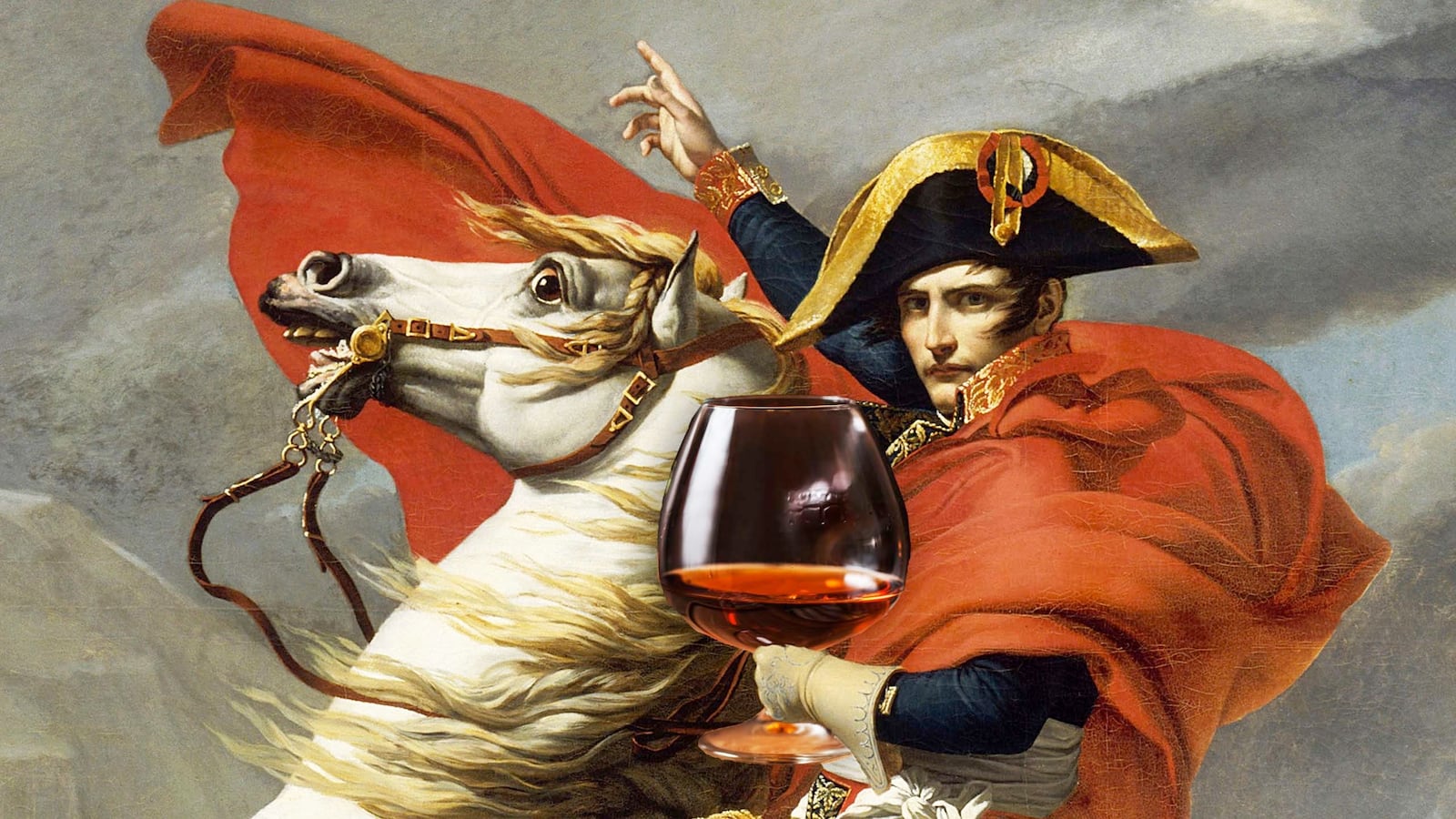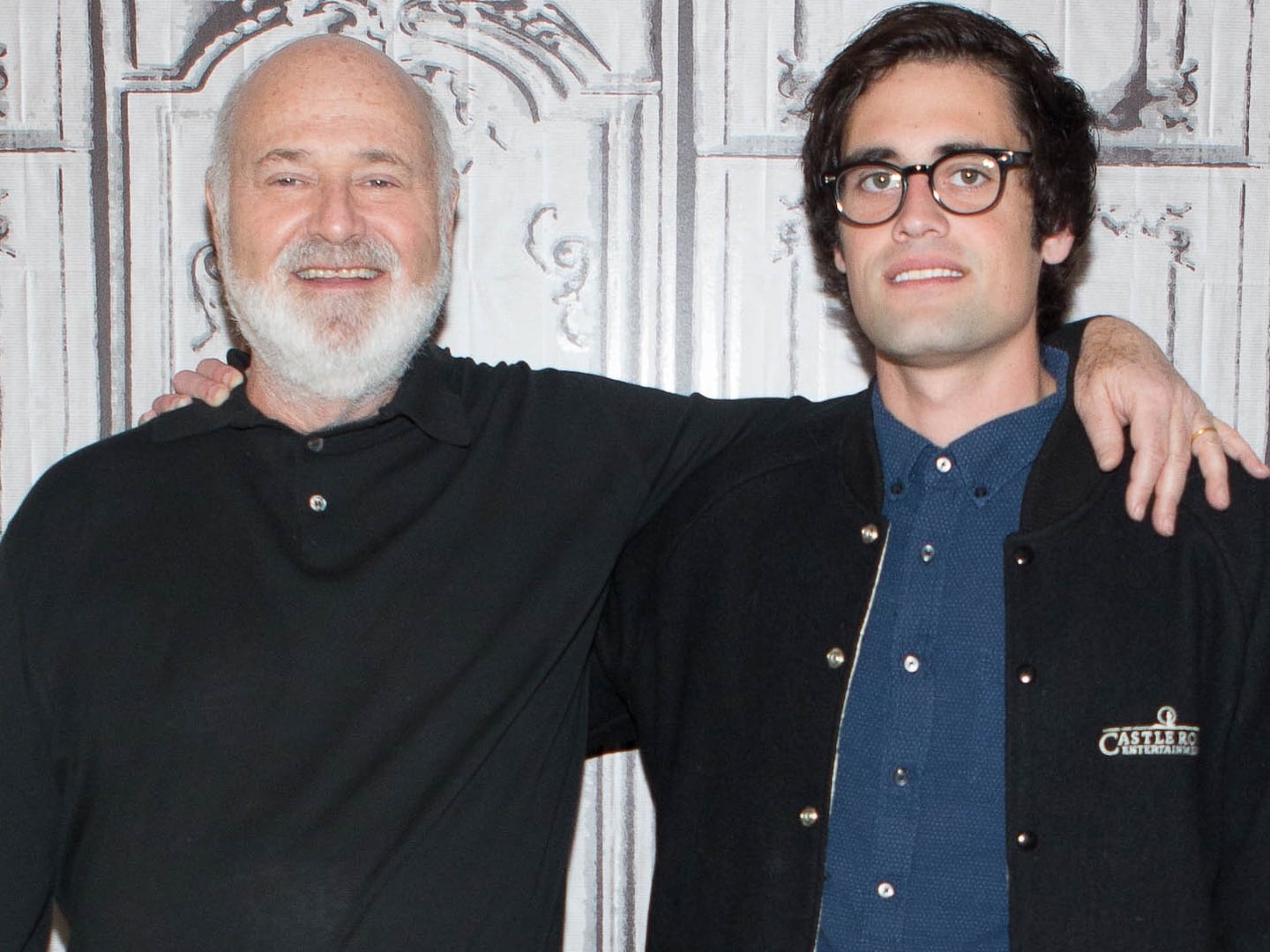In a glass reliquary at the Courvoisier Museum on the banks of the Charente River in Jarnac, France, there’s a white linen vest on display. It’s said to have been once owned and worn by the emperor Napoleon. This seems totally legit—I mean, it’s missing four buttons right where somebody would put their hand in it. Also, nearby is one of his iconic hats, and a wooden chest presumably used as a mobile liquor cabinet. The man guiding me through the museum stood in rapt silence for an uncomfortable number of moments before the vest, allowing the enormity of the historic connection to sink in.
Courvoisier has long attached itself to the cult of Napoleon. In the past century, it regularly advertised itself as “The Brandy of Napoleon.” (Ads in the 1950s went on to claim in part boast, part threat, that “Courvoisier Cognac—and Courvoisier only—bears this registered phrase on every bottle.”) Their assertion has long been that Napoleon preferred Courvoisier, and thus anyone else of good judgment would make the same call (In the ads: “Courvoisier has been the choice of those who could command the finest.”)
So, what exactly does “the brandy of Napoleon” mean? To answer this is to descend into an ant colony filled with many tiny, twisty tunnels, some stinking of piss, and all leading to dead ends. But still, the evolution of the term “Napoleon brandy” and the twistiness of the tunnels makes for a fascinating trip.
One might think that the common-sense definition of “Napoleon’s brandy” is that it’s the brand of brandy Napoleon once drank. Courvoisier doesn’t really state this outright, but if clues they drop here and there lead you to this conclusion on your own, they would not be offended. Most every bottle features a silhouette of the emperor on its label, and they report that he stocked Cognac for his ill-fated invasion of Russia. And after his defeat at Waterloo and exile to St. Helena, Cognac again was his companion. “Legend has it that he chose several casks of Cognac as his one granted item of luxury,” Courvoisier’s website reports, “a treat much appreciated by the English officers on board HMS Northumberland during their 67-day voyage. They named it ‘The Brandy of Napoleon.’”
This is masterful copywriting. Note that it manages to deftly skirt two difficult facts. The first is that Courvoisier was established as a brand in Jarnac in 1835. Inconveniently, Napoleon was exiled in 1815 and died in 1821. The second is that Napoleon didn’t drink. According to biographer Andrew Roberts, “he never drank any spirits, habitually taking one cup of coffee after breakfast and another after dinner.”
To be fair, the connection between Napoleon and Courvoisier isn’t completely fabricated. When Félix-Joseph Courvoisier and Louis Jules Gallois set up their company in Jarnac—it would go on to become known as Courvoisier—it was the second iteration of an earlier wine and spirit wholesale business, founded in 1809 just outside Paris, by Emmanuel Courvoisier, the father of Félix-Joseph.
In 1811, when still in his prime, Napoleon evidently paid a visit to the elder Courvoisier’s warehouse on the river. This moment was commemorated by French painter Étienne Bouhot (1780-1862), who produced a sort of proto-Instagram of the moment, capturing the equestrian celebrity going about his chores of daily life. This visit is also apparently a foundation stone upon which Courvoisier built its branding. (Today it’s the fourth largest seller of Cognac, after Hennessy, Martell, and Remy-Martin.)
Salvatore Calebrese writes in his book, Cognac: A Liquid History, that Courvoisier started using the “brandy of Napoleon” tag line in 1919. (The Courvoisier museum claims 1910.) But by then, the term “Napoleon brandy” had come to take on another definition in Cognac circles: it was ancient brandy that had been distilled and barreled doing Napoleon’s reign. That is, it was brandy Napoleon might feasibly have drunk, had he actually been, you know, a drinker.
The most highly sought were brandies that were alleged to have traveled with Napoleon during one campaign or another, or have been commissioned by him. Some bottles surfaced back in the day that were putatively bottled in 1811 and marked with an “N.” Some actual bottles may have existed; enough counterfeits proliferated to plague spirits auctions for years.
With this lore filling its sails, “Napoleon brandy” entered its golden age in the first half of the last century—you couldn’t toss a shot glass without hitting a bottle of it. This became the gold standard of drink, broadly if loosely applied. Cole Porter’s 1934 hit song “You’re the Top” even gave it a hat tip by including it in an inventory of superlatives (“You’re the top! You’re Mahatma Gandhi/You’re the top! You’re Napoleon brandy.”)
In 1922, during Prohibition, sixteen bottles of brandy said to be bottled in 1811 were seized by customs inspectors at the docks in New York. The Russian musician Max Rabinoff claimed the brandy was necessary to his wife’s health; all bottles were returned to him when he produced a prescription from a French doctor.
In 1934 bottles of “Napoleon brandy” were offered up for sale in Milwaukee for $25 (about $450 today), from Castillon Cognac, which helpfully affixed labels certifying that the juice had improbably been in casks since 1804. In 1938, a flask of Napoleon brandy dating to 1802 was reportedly found tucked in the eaves of the lookout atop an old building in Corpus Christi, Texas, left behind by Zachary Taylor before he marched on Mexico. It is uncertain how much a rube was convinced to pay for this.
Irvin S. Cobb wrote in 1936 of the copious Napoleon brandies he’d been offered, and likened them to Billy the Kid’s handcuffs and Jesse James six-shooters—something apparently available in limitless quantities and open to manufacture on demand. The Chicago Sun Times also reported on the unusual abundance of Napoleon brandy, and warned that “the term is generally gross commercial puffing.”
Yet, the puffing persisted. As late at the 1970s, bottles of “Napoleon brandy” often surfaced at auction houses, with claims to being from 1811. If true, it was likely only a few drops from that special year. New York magazine reported in 1977 that “they certainly have nothing whatever to do with Napoleon.” The New York Times also offered a cautionary note in 1982: “It is worth noting that a great deal of Cognac has been produced in France using Napoleon’s name. The fact is that virtually all Cognac purporting to be Napoleon Cognac has been made in this century and probably within the last 20 years.”
As time went on, “Napoleon brandy” evolved to simply convey an age—like the VSOP or XO marks. Even Courvoisier eased back on its claims of direct ties to the emperor. (They now promote it as “a timeless blend created in the 20th century to celebrate the relationship between the Courvoisier and Napoleon families.”)
The Napoleon bandwagon grew more commodious and comfortable, and other brands began to hop aboard, releasing their own iterations of Napoleon brandy, including Bisquit, Camus, and Remy-Martin.
Napoleon Cognac had by the end of the 20th century adapted a widely accepted if informal definition—it was Cognac that had been aged in oak at least six years. Technically, it was the same as XO Cognac, which was defined by the French non-governmental agency that oversees Cognac production, the Bureau National Interprofessionnel du Cognac. But in everyday usage, XO tended to be aged longer, and so Napoleon Cognac filled the niche between VSOP and XO.
That informal era will draw to a close next April, when Napoleon finally conquers and holds its own territory. Cognacs designated XO will henceforth contain Cognac aged at least 10 years, an increase from six years, which largely reflects how XO has been made the past few decades.
Cognacs aged a minimum of six years will now have a new official designation of their own: they are “Napoleon Cognacs,” and neither snark nor badinage about pedigree will henceforth be permitted.
After two centuries of piffle, lore and shifting definitions, Napoleon will at last be at rest. The emperor has come home.






